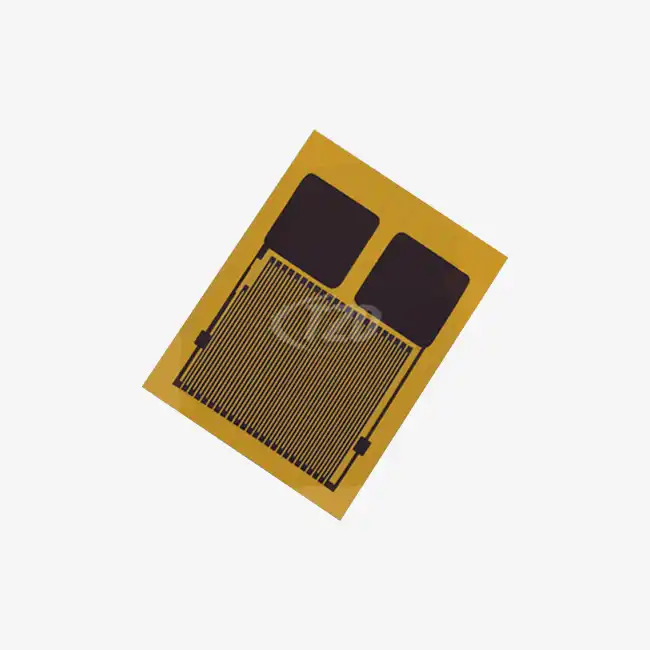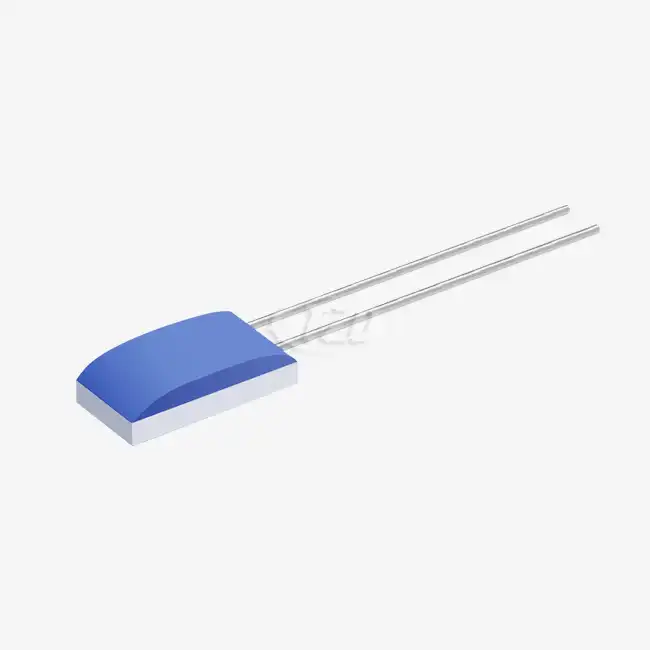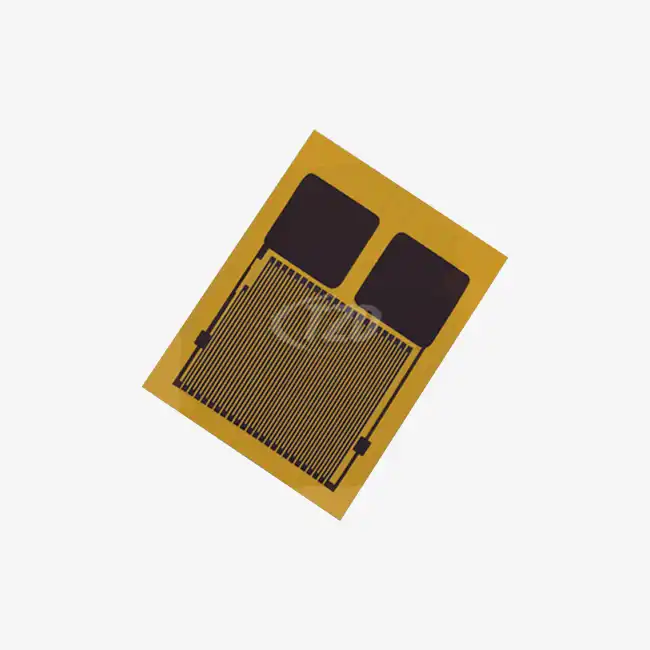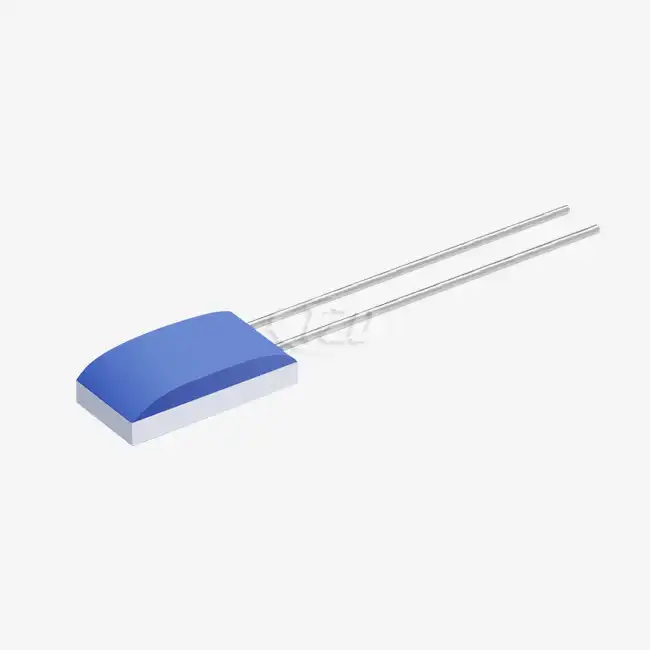Understanding High-Stability Pt1000 Sensors
High-Stability Pt1000 Sensors are sophisticated temperature measurement devices that offer exceptional accuracy and reliability. These sensors are based on platinum resistance thermometry, utilizing the principle that platinum's electrical resistance changes predictably with temperature. The "1000" in Pt1000 refers to the sensor's nominal resistance of 1000 ohms at 0°C, providing a higher resolution compared to its Pt100 counterparts.
One of the defining features of High-Stability Pt1000 Sensors is their remarkable long-term stability. For instance, our sensors exhibit a resistance drift of ≤±0.04% of R₀ (0°C reference) after 1000 hours at 500°C. This exceptional stability ensures consistent and accurate temperature measurements over extended periods, making these sensors ideal for applications requiring precision and reliability.
The temperature coefficient of resistance (TCR) for these sensors is typically 3850 ppm/°C, conforming to the IEC60751 standard. This standardization allows for interchangeability and consistent performance across different sensor models and manufacturers. The wide operating temperature range, often spanning from -200°C to +850°C, makes High-Stability Pt1000 Sensors versatile for various industrial and scientific applications.
Key Characteristics of High-Stability Pt1000 Sensors
High-Stability Pt1000 Sensors boast several noteworthy characteristics that set them apart in the realm of temperature measurement:
- Exceptional accuracy: With tolerances as tight as ± 0.01 Ω, these sensors provide highly precise temperature readings.
- Rapid response time: In optimal conditions, such as water flow at 0.4 m/s, these sensors can achieve response times as low as t₀.₅ = 0.05 s and t₀.₉ = 0.15 s.
- Robust construction: Designed to withstand vibrations of ≥40g acceleration and shocks of ≥100g acceleration, these sensors are suitable for harsh industrial environments.
- Customizable dimensions: Available in various sizes, typically ranging from 1.2mm to 4.0mm, allowing for integration into diverse applications.
- Versatile lead materials: Options include platinum-nickel wire, silver-palladium, pure platinum, or pure silver, catering to specific application requirements.
Understanding these characteristics is essential when calibrating High-Stability Pt1000 Sensors, as they influence the calibration process and the sensor's performance in real-world applications.
The Calibration Process: Steps and Best Practices
Calibrating a High-Stability Pt1000 Sensor requires meticulous attention to detail and adherence to established procedures. The process involves comparing the sensor's output to known temperature standards and making necessary adjustments to ensure accuracy. Here's a comprehensive guide to the calibration process:
Preparation and Equipment
Before beginning the calibration process, gather the following equipment:
- A high-precision temperature calibration bath or dry-well calibrator
- A reference thermometer with traceable calibration
- A high-accuracy resistance measurement device (e.g., a precision multimeter or resistance bridge)
- Insulated cables and connectors
- Calibration software (if applicable)
Ensure all equipment is in good working condition and has been recently calibrated to maintain traceability.

Step-by-Step Calibration Procedure
1. Stabilize the environment: Minimize temperature fluctuations and drafts in the calibration area.
2. Set up the calibration bath: Fill the bath with an appropriate thermal transfer medium and allow it to stabilize at the first calibration point.
3. Connect the sensor: Carefully insert the High-Stability Pt1000 Sensor and reference thermometer into the bath, ensuring they are at the same depth and not touching the walls.
4. Allow for thermal equilibrium: Wait for the sensor and reference thermometer to reach thermal equilibrium with the bath (typically 15-30 minutes).
5. Record measurements: Note the resistance of the Pt1000 sensor and the temperature reading from the reference thermometer.
6. Repeat for multiple points: Calibrate the sensor at several temperature points across its intended operating range.
7. Calculate calibration coefficients: Use the collected data to determine the sensor's calibration coefficients, typically using the Callendar-Van Dusen equation.
8. Apply corrections: Program the calculated coefficients into the measurement system or create a calibration curve for future reference.
9. Verify calibration: Perform a final check at select temperatures to confirm the calibration's accuracy.
Best Practices and Considerations
To ensure the most accurate calibration of High-Stability Pt1000 Sensors, consider the following best practices:
- Use the appropriate excitation current: Typically between 0.1–0.3 mA, to minimize self-heating effects.
- Account for lead wire resistance: Employ a four-wire measurement technique to eliminate lead wire effects.
- Maintain cleanliness: Ensure the sensor and calibration equipment are free from contaminants.
- Allow sufficient stabilization time: Particularly important when calibrating at extreme temperatures.
- Perform regular calibrations: The frequency depends on the application but is typically annual for critical measurements.
- Document thoroughly: Maintain detailed records of calibration procedures, data, and results for traceability.
By following these steps and best practices, you can achieve highly accurate calibration of High-Stability Pt1000 Sensors, ensuring reliable temperature measurements in your applications.
Factors Affecting Calibration Accuracy and Sensor Performance
Several factors can influence the calibration accuracy and overall performance of High-Stability Pt1000 Sensors. Understanding these factors is crucial for maintaining the sensor's integrity and ensuring reliable temperature measurements.
Environmental Influences
Environmental conditions play a significant role in sensor calibration and performance:
- Ambient temperature fluctuations: Can introduce errors if not properly controlled during calibration.
- Electromagnetic interference (EMI): Shielding may be necessary to protect against EMI in industrial settings.
- Humidity: High humidity can affect insulation resistance, particularly at elevated temperatures.
- Vibration and shock: While these sensors are designed to withstand up to 40g of vibration and 100g of shock, excessive mechanical stress can affect calibration stability.
Sensor-Specific Considerations
Characteristics inherent to High-Stability Pt1000 Sensors that affect calibration and performance include:
- Self-heating: With a self-heating coefficient of 0.4°C/mW at 0°C, proper excitation current selection is crucial to minimize this effect.
- Insulation resistance: Maintaining high insulation resistance (100 MΩ at 20°C, >2 MΩ at 500°C) is essential for accurate measurements, especially at high temperatures.
- Hysteresis: Although minimal in high-quality sensors, temperature cycling can introduce small hysteresis effects.
- Lead wire effects: Proper compensation techniques, such as four-wire measurements, are necessary to eliminate errors from lead resistance.
Long-Term Stability and Drift
Long-term stability is a critical factor in sensor performance:
- Resistance drift: High-Stability Pt1000 Sensors typically exhibit ≤±0.04% resistance drift of R₀ after 1000 hours at 500°C, but this can vary based on operating conditions.
- Thermal cycling: Repeated exposure to temperature extremes can gradually affect sensor stability.
- Chemical contamination: Exposure to certain chemicals or gases can alter the sensor's characteristics over time.
By considering these factors during calibration and in the sensor's application environment, you can maximize the accuracy and reliability of your High-Stability Pt1000 Sensors. Regular calibration and proper handling are key to maintaining optimal performance throughout the sensor's lifecycle.

Conclusion
Calibrating High-Stability Pt1000 Sensors is a critical process that ensures accurate and reliable temperature measurements across various industries. By understanding the sensor's characteristics, following proper calibration procedures, and considering the factors that affect sensor performance, you can maintain the highest standards of measurement precision in your applications. Regular calibration, coupled with proper handling and environmental control, will maximize the longevity and reliability of these sophisticated temperature sensing devices.
For more information on High-Stability Pt1000 Sensors or to discuss your specific calibration needs, please contact our expert team at sales11@xatzd.com. Our advanced thin film temperature sensitive chip design, processing, packaging, and testing capabilities ensure that we can provide you with sensors that meet the most demanding requirements in industrial, medical, automotive, and aerospace applications.




